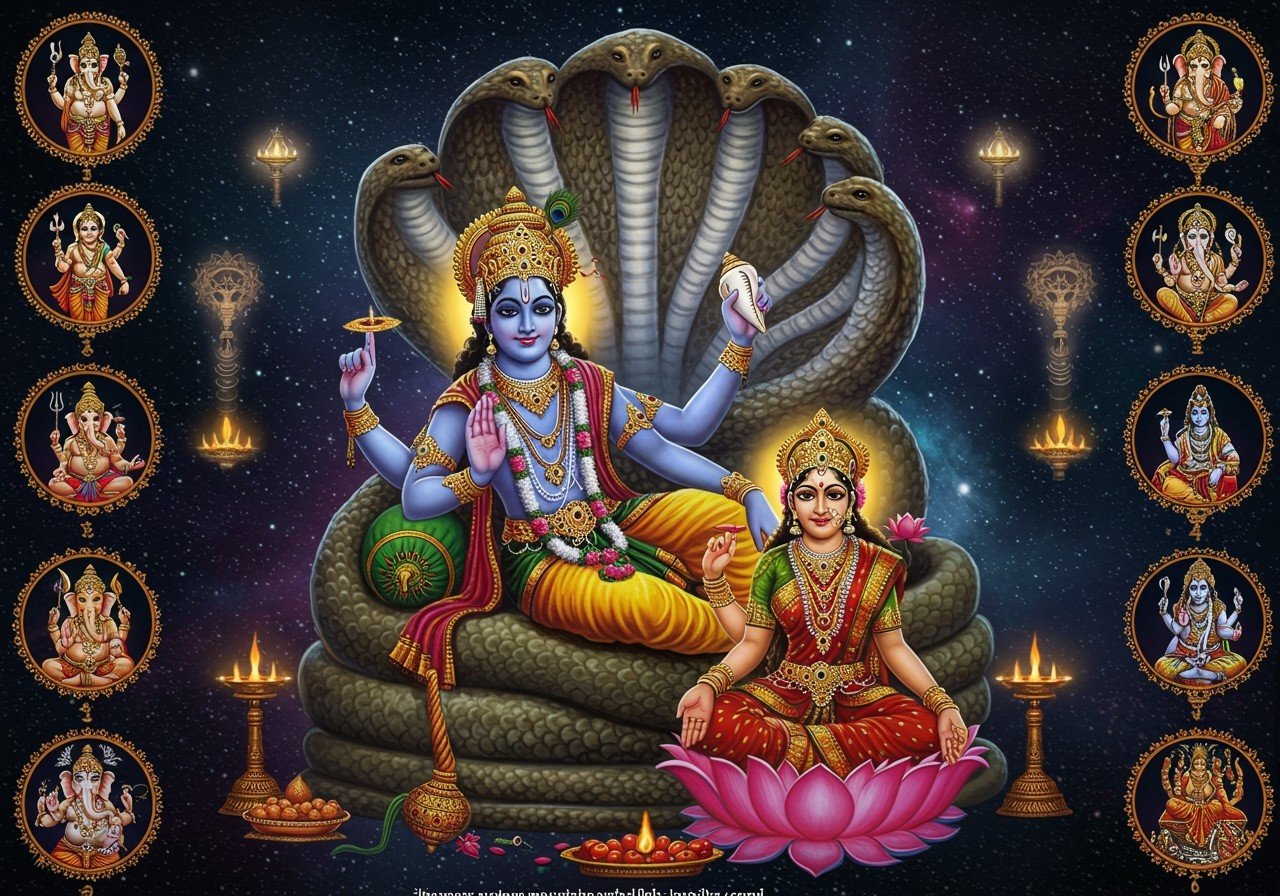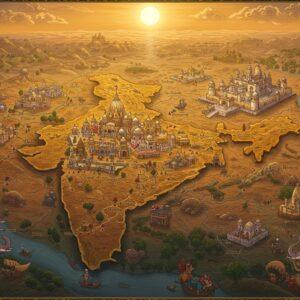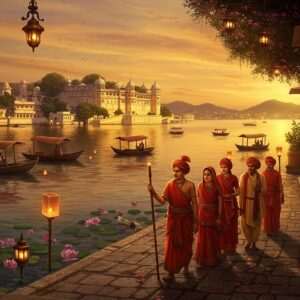
Hindu deities are not merely figures of worship; they represent profound philosophical concepts, embodying various aspects of life, the universe, and the divine. Their significance permeates Hindu culture, art, rituals, and daily practices. This exploration delves into the rich tapestry of Hindu deities and their representation throughout history and in contemporary art forms. Find everything you need for your spiritual practices at Poojn.in.
Exploring the Divine Pantheon
Hinduism is renowned for its expansive pantheon, encompassing a multitude of deities, each with unique attributes, symbolism, and roles within the cosmic order. These divine beings are categorized as Deva (masculine) and Devi (feminine), representing forces of nature, moral values, specialized knowledge, creative energy, and even magical powers.
- The sheer diversity of the Hindu pantheon reflects the multifaceted nature of reality itself. Each deity offers a unique lens through which to understand the divine and our place within the cosmos.
- These Devas and Devis are often considered manifestations of Brahman, the ultimate reality, thus highlighting the interconnectedness of all beings and the divine essence that pervades the universe. Explore authentic murtis and puja items on Poojn.in.
The Trinity and Their Consorts
At the heart of the Hindu pantheon lies the Trimurti, the divine trinity consisting of Brahma (the creator), Vishnu (the preserver), and Shiva (the destroyer). These three deities embody the fundamental forces of creation, preservation, and destruction that govern the cyclical nature of the universe.
- Brahma, Vishnu, and Shiva are not simply individual deities but represent the interplay of cosmic forces that maintain balance and order. Their iconography and associated myths provide rich insights into the complexities of Hindu cosmology.
- Complementing the Trimurti are their consorts, the Tridevi: Saraswati (Brahma’s consort, goddess of knowledge and wisdom), Lakshmi (Vishnu’s consort, goddess of prosperity and fortune), and Parvati (Shiva’s consort, goddess of power and divine energy). Together, they represent the interplay of masculine and feminine energies in the universe. You can find beautiful statues of Lakshmi and Ganesh at Poojn.in.
Hindu Art: A Visual Expression of Devotion
Hindu art serves as a powerful medium for expressing devotion and conveying complex theological concepts through visual narratives. From intricate temple carvings to vibrant paintings and iconic sculptures, Hindu art captures the essence of the divine and its multifaceted manifestations. Discover a wide selection of spiritual art and supplies at Poojn.in.
- Temple architecture, with its elaborate carvings and towering structures, stands as a testament to the ingenuity and devotion of Hindu artisans. These sacred spaces serve as a bridge between the earthly and the divine, providing a focal point for worship and spiritual contemplation.
- Sculptures and paintings of deities, known as Murtis and Pratimas, are not merely artistic representations but are considered embodiments of the divine. They are meticulously crafted according to specific iconographic guidelines, ensuring that they accurately reflect the deity’s attributes and symbolism. Poojn.in offers exquisite Radha Krishna sculptures for your home.
The Evolution of Hindu Artistic Traditions
The artistic representation of Hindu deities has evolved over centuries, reflecting changing cultural influences and artistic innovations. From the early influences of Buddhist art to the distinct stylistic and symbolic elements that emerged during the Kushan period, Hindu art has continuously adapted while retaining its core spiritual essence.
- The Kushan period marked a significant turning point in the development of Hindu art, as Brahmanical deities were given their standard iconographic forms. This standardization allowed for greater recognition and consistency in the depiction of major cult icons like Vishnu, Shiva, Surya, Sakti, and Ganapati.
- The evolution of Hindu art demonstrates the dynamic interplay between tradition and innovation. While remaining rooted in ancient scriptures and spiritual principles, Hindu art has embraced new materials, techniques, and styles, ensuring its continued relevance and vibrancy in the modern world.
Iconography and Symbolism
The iconography of Hindu deities is rich in symbolism, with each deity possessing unique attributes and emblems that convey their specific powers and qualities. Understanding these symbols is essential for appreciating the deeper meaning embedded within Hindu art and ritual practices.
- Vishnu, the preserver, is often depicted with blue skin, holding a lotus flower (symbolizing purity), a conch shell (representing the primordial sound of creation), a chakra (a discus representing the cyclical nature of time), and a mace (symbolizing power and authority). These symbols reflect Vishnu’s role as the protector and sustainer of the universe.
- Shiva, the destroyer, is typically depicted carrying a trident (representing the three fundamental qualities of nature), a serpent (symbolizing cosmic energy), a skull (representing the impermanence of life), and a crescent moon (symbolizing the cyclical nature of time). These symbols embody Shiva’s association with both destruction and transformation.
Pilgrimage and the Sacred Landscape
Pilgrimage plays a vital role in Hindu worship, with sacred sites considered to be points of convergence between heaven and earth. These journeys offer devotees an opportunity to connect with the divine, seek blessings, and deepen their spiritual understanding. You can find puja essentials for your pilgrimage at Poojn.in.
Contemporary Interpretations and the Future of Hindu Art
Modern artists are continually exploring new ways to represent Hindu deities, blending traditional motifs with contemporary styles and techniques. This fusion of old and new ensures that Hindu art remains a vibrant and evolving tradition, reflecting the ongoing dialogue between the past, present, and future.
Hindu deity art continues to inspire awe and devotion across generations. Its rich symbolism, intricate details, and profound spiritual meaning serve as a powerful reminder of the divine presence in our lives. As we explore and appreciate these artistic treasures, we deepen our connection to the rich cultural heritage of Hinduism and the enduring power of faith.
Poojn.in is proud to offer a wide selection of authentic puja items and deity statues to support your spiritual practices. Visit Poojn.in today and explore our diverse collection.


